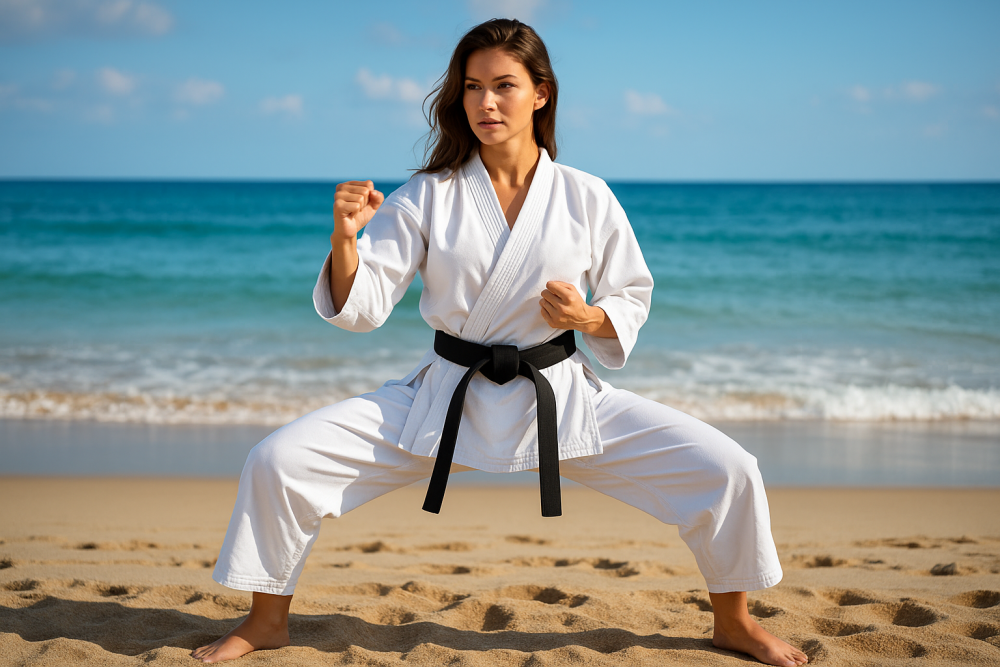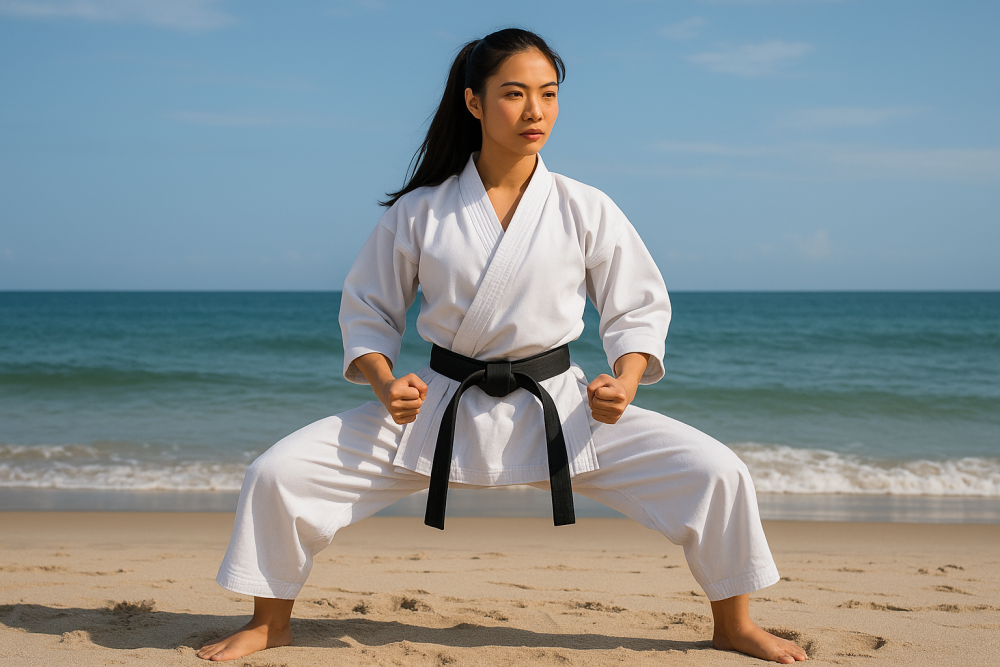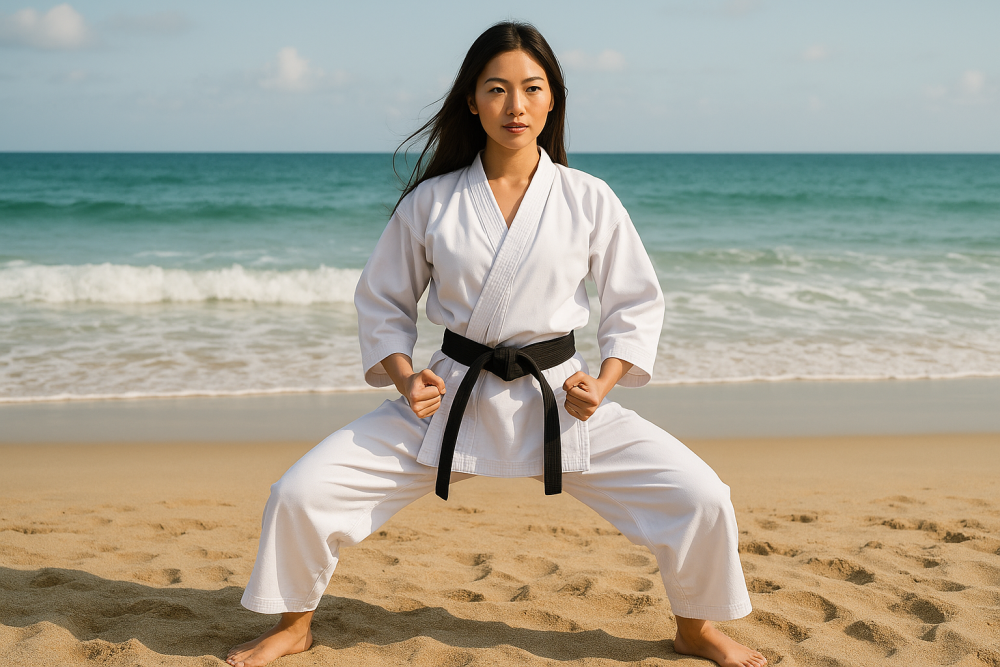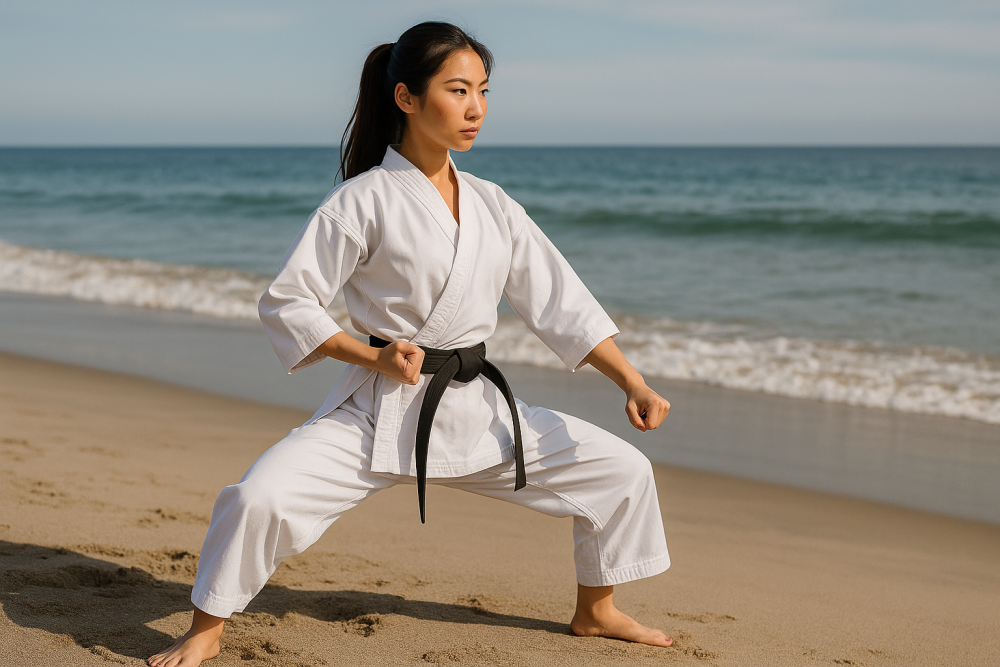Shiko Dachi in Karate – Sumo Stance Explained
Discover the roots, purpose, and proper form of this powerful stance
Introduction: Understanding Shiko Dachi
Shiko Dachi, also known as the Sumo Stance, is a wide, grounded stance used in traditional Japanese martial arts, especially Karate. Known for providing strong balance and rootedness, it plays a key role in forms, training, and application.
Whether you’re a beginner learning your basics or an advanced martial artist refining kata, mastering Shiko Dachi builds strength, endurance, and precision.
The Origin of Shiko Dachi
The name Shiko Dachi (四股立ち) is derived from sumo wrestling—specifically the leg-stomping movement called shiko, used to intimidate opponents and symbolically purify the ring. Karate adopted the stance for its powerful foundation and structural integrity. You’ll find it used extensively in styles like Goju-Ryu, where rooted stances are essential.

Where and How Shiko Dachi Is Used in Karate
In Karate, Shiko Dachi appears primarily in:
- Kata (forms) for demonstrating strength, power, and control
- Kihon (basics) to build leg endurance and improve posture
- Bunkai (application) to resist or absorb force from an opponent
You’ll often find this stance in katas such as:
- Seisan
- Saifa
- Shisochin
Its purpose is to create a low, strong center of gravity that enhances stability and striking power.
Shiko Dachi Step-by-Step

- Start from Natural Stance
Begin in Hachiji Dachi, feet shoulder-width apart. - Step Out Wide
Step your feet outward so they’re twice shoulder-width apart. - Turn Feet Outward
Point your toes outward at a 45-degree angle. - Bend the Knees
Lower yourself by bending the knees, keeping your back straight and upright. - Push Knees Out
Make sure your knees stay aligned with your feet and don’t cave inward. - Engage Core and Glutes
Activate your abdominal and gluteal muscles to maintain proper structure. - Sink Deeper
Aim to bring your thighs as close to parallel with the ground as your flexibility allows. - Hold and Breathe
Hold the position for 10–30 seconds during practice, breathing steadily.
Benefits of Practicing Shiko Dachi

- Builds Leg Strength – Develops thighs, glutes, calves
- Improves Balance – Low center of gravity increases stability
- Enhances Mental Discipline – Holding this stance requires focus and endurance
- Strengthens Rooting – Teaches control and how to remain grounded under pressure
Recommendations for Training Shiko Dachi

- Always Warm Up First
Loosen up hips and legs with dynamic stretches. - Prioritize Alignment
Don’t go too deep if it compromises your knee or ankle position. - Use a Mirror or Video
Visual feedback helps correct alignment issues. - Start Slow
Begin with short holds and gradually increase your time. - Practice in Kata
Reinforce the stance by applying it consistently in kata practice.
Final Thoughts
Shiko Dachi may look simple, but it embodies the essence of Karate: strength, grounding, and focus. Rooted in tradition and refined through practice, this stance builds not just physical power—but martial character.
Train it with patience. Execute it with purpose.
Karate Requirements
- Karate Stances
- Karate Punches
- Karate Kicks
- Karate Blocks
- Karate Strikes
- Karate Traditional Katas
- Karate Traditional Weapons
- Karate General Terminology
Follow our Social Media!









